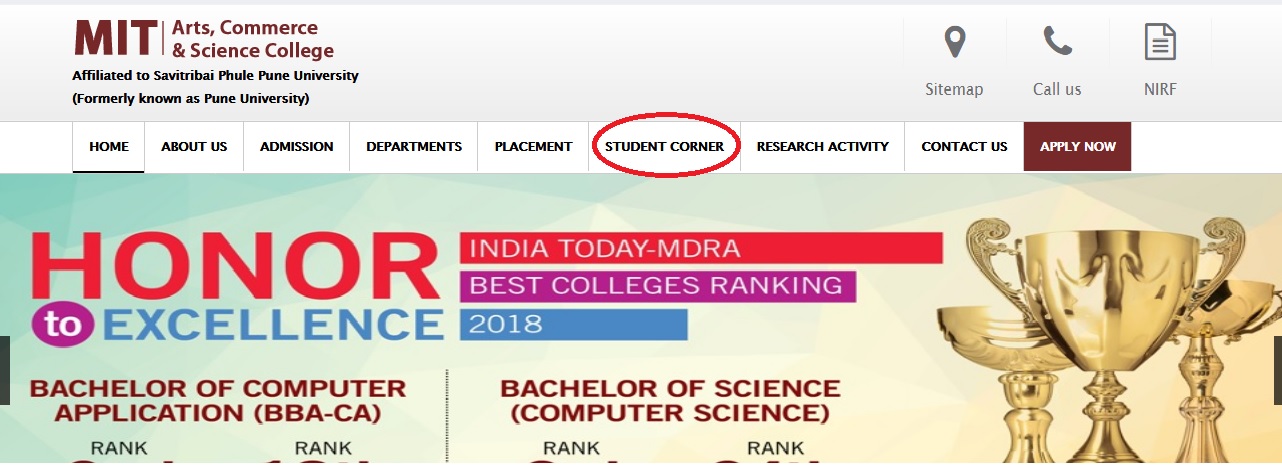Electronic Device, Circuits and Computer Peripherals B.SC Question Bank : mitacsc.ac.in
Name of the University : University of Pune
Name of the College : MIT Arts Commerce & Science College
Degree : B.SC
Department : Computer Science
Subject Code/Name : Electronic Device, Circuits and Computer Peripherals
Year : I
Document Type : Question Bank
Website : mitacsc.ac.in
Download Model/Sample Question Paper : https://www.pdfquestion.in/uploads/mitacsc.ac.in/3801.-EDCCP.pdf
MIT Electronic Device & Computer Peripherals Question Paper
Chapter 1.
DC- Circuit Analysis
Q.1 State the following theorems :1) Norton
Q.2 State Kirchoff’s voltage & current laws.
Q.3 Explain KCL & KVL. Give formulas of Ib,Ic & Ie.
Related : MIT Arts Commerce & Science College ELC221 Microprocessor Architecture & Programming B.SC Question Bank : www.pdfquestion.in/3821.html
Q.4 Draw the Thevenins equivalent circuit.
Q.5 Draw the Norton equivalent circuit.
Q.6 Draw & state the superposition theorem.
Q.7 State Ohm’s law.
Q.8 What is the equivalent resistances of three resistances R1,
Q.9 What is the equivalent Capacitances of three capacitor C1,
Chapter 2.
Semiconductor Diode
Q.1 Draw the symbols of the following :1. Rectifier Diode
Q.2 What do you mean by forward bias & reverse biased
Q.3 Draw I-V characteristics of diode.
Q.4 What is photodiode-
Q.5 What is opt coupler-
Q.6 State two types of seven segment LED display.
Q.7 Explain the formation of P-N diode. Define depletion region
Q.8 Draw I-V characteristics for Zener diode.
Q.9 “LED emits light in forward bias but diode .

Chapter 3.
Bipolar Junction Transistor
Q.1 Why is BJT know as bipolar transistor.
Q.2 Draw the symbol for NPN & PNP transistor.
Q.3 What is Q-point of a transistor.
Q.4 Draw the DC load line for CE amplifier & show saturation,
Q.5 Explain the action of NPN transistor with neat diagram .
Q.6 How transistor works as a switch.
Q.7 For certain transistors a = 0.96 & IE = 4mA. Calculate IC & IB.
Q.8 Explain Q point for the transistor circuit. Draw DC load line.
Chapter 4.
Field Effect Transistor
Q.1 Compare FET & BJT.
Q.2 Why is FET called a unipolar transistor.
Q.3 Define the following parameter :1. DC drain resistance
Q.4 State various advantages of JFET.
Q.5 Draw & explain MOS capacitor.
Q.6 Explain working of DE-MOEFET.
Q.7 How can MOSFET be used as inverter.
Chapter 5.
Amplifier
Q.1 Draw the block diagram of op-amp & explain.
Q.2 List at least five parameter of an ideal op-amp.
Q.3 Define the following parameter :1.Input Impedance
Q.4 Give classification of amplifier based on Q point.
Q.5 Drive the equation for the gain of non-inverting op-amp.
Q.7 Define a & ß. Derive the relation between a & ß.
Q.8 Explain op-amp as an integer & derive the output equation.
Q.9 Explain op-amp as a differentiator & derive the output equation.
Chapter 6.
Oscillator
Q.1 State Barkhausen criteria required for oscillations.
Q.2 With neat diagram explain the working of phase shift oscillator.
Q.3 Write a note on Colpitts oscillator.
Q.4 In Hartley oscillator L1=1µH, L2 = 0.2µH & C = 1000pF. Calculate the frequency of oscillations.
Q.5 In phase shift oscillator R = 1.8 KO, C = 10 pF. Calculate the frequency of oscillations.
Chapter 7.
Power Supply
Q.1 Define unregulated & regulated power supply.
Q.2 Which device is used as a rectifier.
Q.3 Define line & load regulation with their ideal values.
Q.4 What is use of heat sink?
Q.5 What are advantages & disadvantages of SMPS?
Q.6 What is need of UPS?
Q.7 With block diagram explain on line UPS.
Q.8 Explain the use of spike protector.
Q.9 Compare half, full & bridge rectifier.
Q10. Explain three pin positive & negative voltage regulator.
Q11. Explain the working of SMPS with proper block diagram.
Q12. Give any five specification of power supply.
Q13. With block diagram explain off line UPS.
Q14. What is Snubber?
Q15.Compaire ON line & OFF line UPS.
Chapter 8.
Electronics in computer system
Q.1 State main component present in the mother board.
Q.2 What are the different types of key boards? Give the main feature of windows keyboard.
Q.3 State the various types of mouse. Explain the mechanism of optical mouse.
Q.4 Explain the working of CCD camera.
Q.5 Explain the working principle of CRT monitor.
Q.6 What is LCD display. Explain plasma display.
Q.7 Explain the working of LASER printer & dot matrix.
Q.8 Sate the various types of output devices.
Q.9 What are the different types of ear phones. Explain any one.